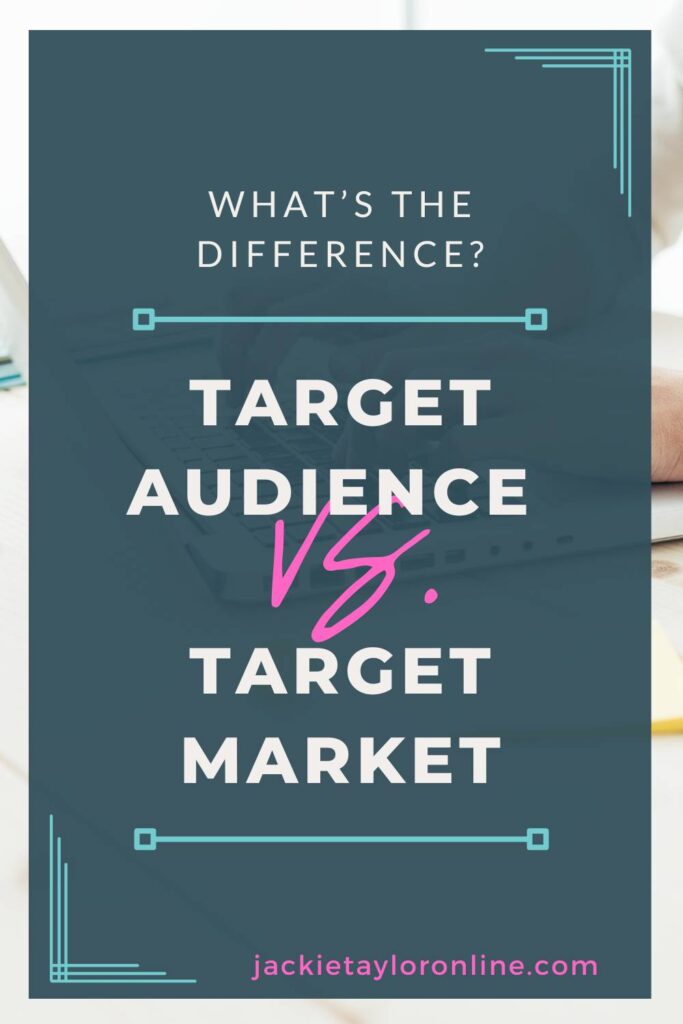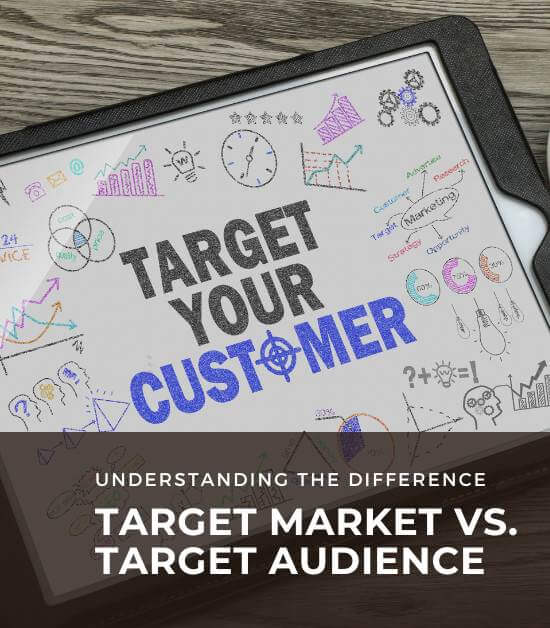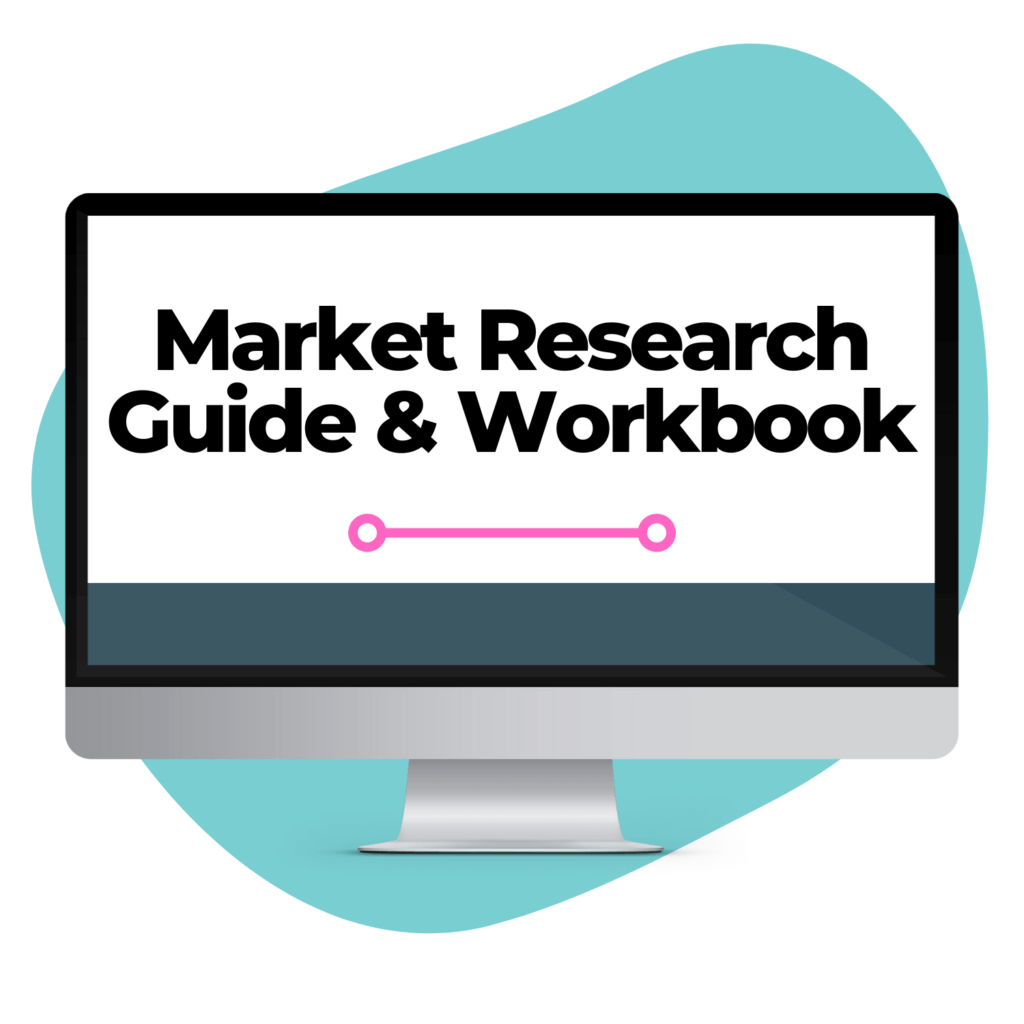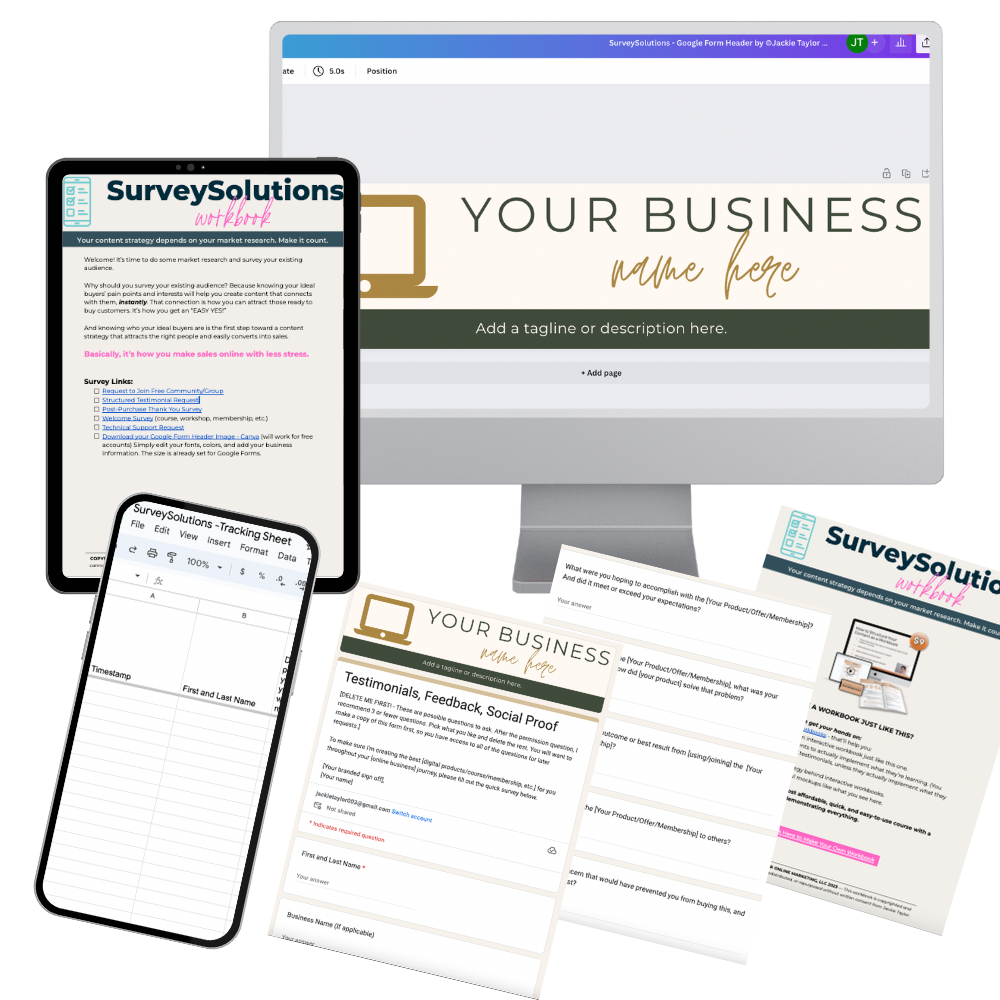When it comes to creating a successful marketing campaign, identifying your target market vs target audience is crucial. While the terms “target market” and “target audience” are often used interchangeably, they are not the same thing.
In this article, we will delve into the definitions of target market and target audience, the importance of identifying them, their key differences, and how to identify each one effectively.
AFFILIATE DISCLAIMER: I SOMETIMES LINK TO PRODUCTS AND SERVICES TO HELP COVER THE COSTS OF RUNNING THIS BLOG. THERE’S NO EXTRA COST TO YOU – AND I ONLY RECOMMEND PRODUCTS THAT I’VE BOTH USED PERSONALLY AND THINK ARE QUALITY PRODUCTS THAT HELP WITH EFFICIENCY. PLEASE READ MY AFFILIATE DISCLOSURE FOR MORE INFORMATION. THANKS FOR YOUR SUPPORT!
Table of Contents
- Defining Target Market vs Target Audience
- Importance of Identifying Your Target Market vs Target Audience
- Key Differences Between Target Market and Target Audience
- How to Identify Your Target Market
- How to Identify Your Target Audience
- Target Market Vs Target Audience
Pin it on Pinterest!

Defining Target Market vs Target Audience
What is a Target Market?
A target market is a specific group of consumers who share common characteristics and needs. These characteristics can include demographics such as age, gender, income, and education level, as well as psychographics such as personality, values, interests, and lifestyle.
Additionally, behavior such as purchasing habits, product usage, and brand loyalty, as well as location such as geographic region, urban vs. rural, and climate can also be included in identifying a target market.
By understanding your target market, you can create a more effective marketing strategy that resonates with your audience and drives business growth.
For example, if you are selling luxury sports cars, your target market may consist of affluent individuals who have a high net worth, a passion for high-performance vehicles, and a desire to stand out from the crowd.
What is a Target Audience?
A target audience is a subset of your target market that is most likely to be interested in your product or service. This group of consumers is already somewhat familiar with your brand and is more likely to make a purchase than other consumers in your target market.
Identifying your target audience helps you to focus your marketing efforts on those who are most likely to become loyal customers.
For example, if you are selling luxury sports cars, your target audience may consist of existing customers who have purchased from you in the past, as well as individuals who have expressed interest in high-end vehicles through online searches or social media engagement.
By targeting this specific audience, you can create personalized marketing messages that resonate with their interests and needs, ultimately driving more sales and revenue for your business.
It’s important to note that your target market and target audience may evolve over time as consumer preferences and behaviors change. Regularly reviewing and updating your marketing strategy can help ensure that you are effectively reaching and engaging your desired audience.
Importance of Identifying Your Target Market vs Target Audience
Identifying your target market and audience is a crucial step in any successful marketing strategy. Without a clear understanding of who your ideal customer is, it can be difficult to create effective marketing campaigns that resonate with them.
Benefits of Knowing Your Target Market
Knowing your target market provides numerous benefits, including:
- More effective marketing efforts that resonate with your audience
- Reduced marketing costs by targeting only those who are most likely to convert
- Improved customer satisfaction by tailoring products and services to their specific needs
By understanding your target market, you can create marketing campaigns that speak directly to their needs, wants, and pain points. This not only makes your marketing more effective, but it also helps to build trust and credibility with your audience.
Additionally, by targeting only those who are most likely to convert, you can reduce your marketing costs and improve your return on investment (ROI). Rather than wasting resources on a broad audience, you can focus your efforts on those who are most likely to take action.
Wouldn’t it be amazing if you could just know where to look for information about your ideal buyers? Find your buyers right now, instead of wasting time looking in all the wrong places?
Check out the Market Research Guide and Workbook. You’ll go from no idea what content to create. To knowing exactly what content to create and how to get that content seen. And you’ll have a fully loaded Ideal Buyer Persona workbook that’s backed by real research. With a solid start to your SEO Keyword strategy.
Benefits of Knowing Your Target Audience
Identifying your target audience provides distinct advantages, including:
- Increased brand loyalty from consumers who are most likely to become repeat customers
- Improved message delivery by customizing communication to their specific motivations and needs
- Overall improved return on investment (ROI) by targeting those most likely to make a purchase
Understanding your target audience goes beyond just demographics. It involves understanding their behaviors, motivations, and pain points.
By doing so, you can create messaging that speaks directly to them and resonates on a deeper level.
By delivering messages that are tailored to their specific needs, you can increase brand loyalty and create repeat customers. This not only leads to increased revenue, but it also helps to establish your brand as a trusted authority in your industry.
Overall, identifying your target market and audience is a critical step in creating a successful marketing strategy. By doing so, you can create more effective campaigns, reduce costs, and improve your return on investment.
Related Article: Customer Research Methods: 4 Ways to Get Inside Your Audience’s Mind
Key Differences Between Target Market and Target Audience
Understanding your target market and target audience is critical to the success of any marketing campaign. While the two terms are often used interchangeably, they refer to different groups of consumers with distinct characteristics and behaviors. Let’s explore the key differences between target market and target audience in more detail.
Scope and Size
Your target market is the entire group of consumers who share common characteristics. This can include millions of individuals across different age groups, genders, and locations.
On the other hand, your target audience is a smaller and more specific subset of your target market that is most likely to be interested in your product or service.
For example, if you’re selling baby products, your target market might be all parents with young children, while your target audience might be first-time parents who are interested in eco-friendly and organic products.
Knowing the difference between the two can help you tailor your marketing efforts more effectively.
Marketing Strategies and Tactics
The marketing strategies and tactics used for your target market may differ from those used for your target audience. Your target market may require a more general approach to reach the diverse group of consumers included.
For instance, you might use broad-based advertising campaigns, such as billboards or radio ads, to reach a large number of people.
Your target audience, on the other hand, requires a more personalized approach to engage and encourage them to make a purchase.
This might include targeted email campaigns, social media ads, or influencer marketing.
Communication Channels and Messaging
Your target market may require different communication channels and messaging than your target audience. For example, younger consumers may be more likely to use social media channels, while older consumers may prefer traditional media channels like television or print advertising.
According to NotifyVisitors, getting to know your target audience and which group or subsets of your audience like to use a particular social media channel helps determine your overall marketing.
Their findings found that Facebook is still the most widely used social media channel. You can find their target audience stats breakdown of each social platform and the percentage of users by age and gender.
Of course, you’ll need to do your own research to see where your particular audience is hanging out online. But understanding these differences will allow you to create targeted messages tailored to each segment of your audience.
You can also use different messaging to appeal to different segments of your target market. For example, if you’re selling a luxury product, you might use aspirational messaging to appeal to high-income consumers, while using value-focused messaging to appeal to budget-conscious consumers.
Understanding the differences between your target market and target audience is crucial to the success of your marketing efforts.
By tailoring your approach to each group, you can create more effective campaigns. Because marketing that instantly resonates with your audience WILL drive sales.
How to Identify Your Target Market
Identifying your target market is a crucial step in developing a successful marketing strategy. When you truly understand who your ideal customer is, you can tailor your messaging better. Your overall marketing strategies will instantly resonate with them. Here are some tips for identifying your target market:
Analyzing Your Product or Service
When analyzing your product or service, it’s important to consider more than just its basic features and benefits. Think about the specific pain points it solves for customers, and the unique value it provides.
For example, if you sell organic skincare products, your target market might be health-conscious consumers who prioritize natural ingredients and eco-friendliness.
Researching Competitors
Competitive research can provide valuable insights into your target market. Look at who is already buying from your competitors, and consider what sets your product or service apart.
If you’re a boutique fitness studio, for instance, you might find that your target market is young professionals who prioritize wellness and enjoy trying new workout trends.
Additionally, analyzing your competitors’ marketing tactics can help you identify gaps in the market that you can fill. For example, if you notice that none of your competitors are offering virtual classes, you might consider targeting consumers who prefer to work out at home.
Identifying Market Segments
Market research can help you identify various segments within your target market. By analyzing demographic data like age, gender, education level, and income, you can create customer personas that represent your ideal customers.
It’s important to note that not all customers within a given segment will have the same needs or preferences.
For example, just because two customers are both women in their 30s with high incomes doesn’t mean they’ll respond to the same marketing messaging. That’s why it’s important to conduct additional research and gather feedback from your target customers. Truly understand their motivations and pain points.
By taking the time to identify your target market and understand their needs and preferences, you can create a more effective marketing strategy. One that resonates with your ideal customers. Remember to continually gather feedback and adjust your approach as needed to stay relevant and competitive in your industry.
Share it on Pinterest!

How to Identify Your Target Audience
Creating Buyer Personas
Creating buyer personas is an effective way to identify your target audience. Buyer personas are fictional representations of your ideal customer, including demographics, psychographics, interests, and behaviors. By creating these personas, you can better understand the motivations and needs of your target audience.
Analyzing Customer Data
Analyze customer data to identify patterns and trends that can help you better understand your target audience. This data can include purchase history, communication preferences, and social media activity.
Conducting Surveys and Interviews
Conduct surveys and interviews to gather direct feedback from your target audience. This information can help you better understand their motivations, preferences, and needs.
Are you looking to survey your audience, but you’re not sure where to start? Check out SurveySolutions.
I created this survey template to be the quickest and easiest solution for mom entrepreneurs trying to conduct market research.
- Take the guesswork out of what questions to ask.
- Get structured testimonials for better social proof that sells.
- And you can have your surveys created and setup in under an hour.
Related Article: Crafting Target Audience Survey Questions for Maximum Insight
Target Market Vs Target Audience
Identifying your target market and target audience is a crucial step in creating an effective marketing campaign. While target market and target audience are often confused, their differences are important to understand.
Knowing your target market provides numerous benefits, while identifying your target audience allows you to focus your marketing efforts on those who are most likely to become loyal customers.
Utilizing the strategies outlined above will help you identify both your target market and target audience, resulting in a more successful marketing campaign and overall business success.
Looking for more online marketing resources? Check out these latest articles:



+ show Comments
- Hide Comments
add a comment